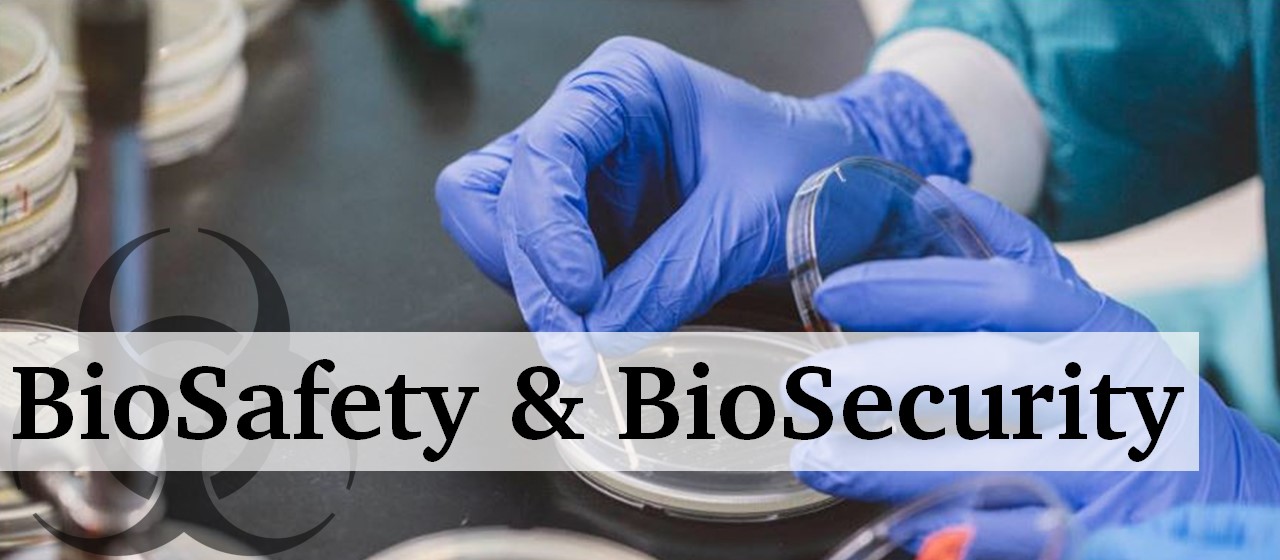
Work with microorganisms, recombinant/synthetic nucleic acids, human and animal materials, insect and animal vectors, and other potentially biohazardous materials is necessary in many university research and teaching applications and requires special practices and procedures, and in some cases, special equipment to protect personnel and the environment.
Texas Tech University is actively committed to preserving the health and safety of its students, staff, and faculty and to protecting the environment and surrounding community. The Department of Environmental Health & Safety provides guidance regarding the assessment, containment, and security of biological materials that complement the institutional operating policies which support compliance with the guidelines, recommendations, and regulations applicable to such work.
Biosafety News & Updates
Recent changes to Biosafety Policy at TTU
At the November 2024 meeting of the IBC, the following changes to the biosafety manual were approved:
B5.0.1
Containment must be achievable and maintained, and required handwashing and emergency equipment must be operable in research and teaching settings. Sanitizer may replace handwashing in field settings.
B5.0.1.2
Compromises to structure, utilities (power, light, water, HVAC, etc.), or other facility/room engineering controls/components can impact containment integrity and worker safety, and subsequently affect the space’s designation (i.e., active laboratory, containment level(s), etc.) or scope of work that is allowed.
B5.0.2
Research and teaching materials and equipment must not be stored, used, or handled in public areas. See A9.6.6.1, A9.6.6.2, and B11.1 for the requirements concerning equipment decontamination prior to removal from a laboratory.
Cayuse Resources
In January 2023, the Institutional Biosafety Committee (IBC) launched the Cayuse Hazard Safety application for IBC protocol management. The IBC Office has developed a Researcher Toolbox and a Cayuse FAQ page to assist you in completing your IBC protocol in Cayuse.
Resources & Links
CDC-Biosafety in Microbiological and Biomedical Laboratories 6th ed.
NIH-OSP Division of Biosafety, Biosecurity, and Emerging Biotechnology
Federal Select Agent Program - Guidance Documents
Pathogen Safety Data Sheets - Health Canada
American Biological Safety Association - ABSA International
OSHA Bloodborne Pathogen Standard
Texas Department of State Health Services - Bloodborne Pathogens
Model Bloodborne Pathogen Exposure Plan
Safely doffing gloves - "Beaking" Method
Biosafety Topics
The links below provide specific information about the BioSafety & BioSecurity Program at Texas Tech.
Academic Safety ResourcesAnimals & Animal Materials
Arthropods & Vectors
Biological Risk Assessment
Biosafety & Biosecurity Home Page
Biosafety Cabinets and other Engineering Controls
Biosafety FAQs
Biosafety PI Responsibilities
Biosecurity
Biowaste Management
BUGs (Bio-material Use Guides)
Clinical Biosafety
Decontamination
Emergency Response
Human & Non-Human Primate Materials
Laboratory Self-Survey
Microorganisms
Occupational Health Program (OHP)
Personal Protective Equipment (PPE)
Plants
Prions
Recombinant/Synthetic Nucleic Acids (r/s NAs)
Standard Operating Procedures (SOPs)
Toxins of Biological Origin
Transporting Biological Materials
IBC Resources

Researcher Toolbox (Forms & Guides)
IBC Protocol Registration Process
Cayuse FAQs
Cayuse Personnel Registration
DURC-PEPP
IBC Minutes
Environmental Health & Safety
-
Address
Texas Tech University, 407 Flint Ave, Lubbock, TX 79409 (Mail Stop 1090) -
Phone
806.742.3876 -
Email
safety@ttu.edu
